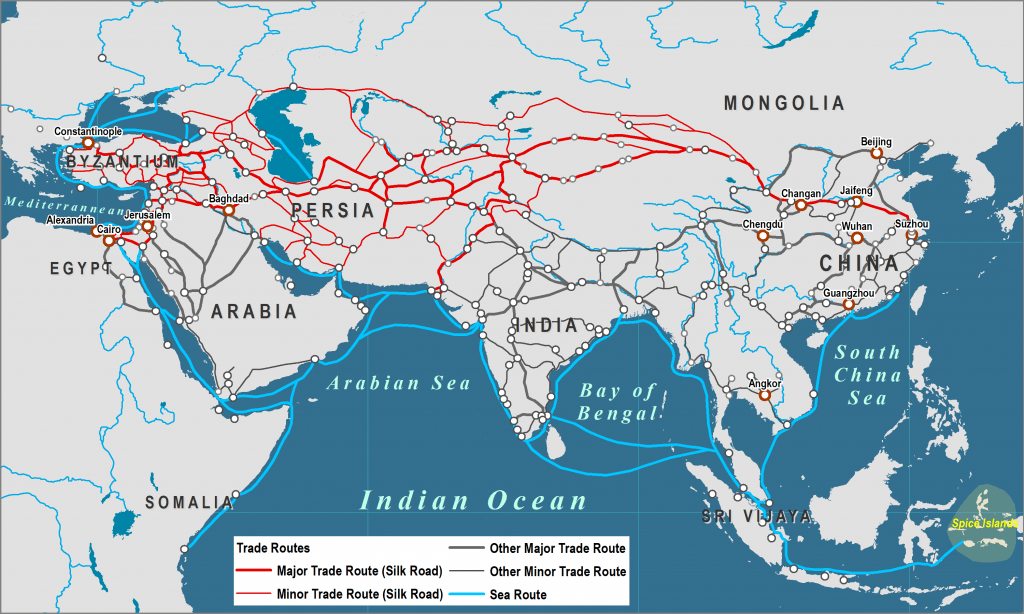Silk road
Human is a social beings and always moved across the land and socialized and transacted with his neighbors exchanging goods, cultures, ideas, beliefs and skills. So he needed roads to fulfill his social duty as a human being. Silk road is an ancient network routes which linked east and west for commerce purposes and was a center for cultural, political and religious interactions which passed through many different empires, kingdoms, territories, and societies like China, Kyrgyzstan, Kazakhstan, Tajikistan, Uzbekistan, Turkmenistan, Iran, Azerbaijan, Georgia, and Armenia. Silk Road is one of the most amazing ancient and historical

roads of Iran destinations and the main highway for foreign travelers who wished to visit Iran. Marco Polo the Italian merchant and adventurer was the first explorer traveled through Asia along Silk Road between 1271-1295.The term of Silk Road was used for the first time in 1877 by German historian and photographer Ferdinand von Richthofen in order to distinguish the trade routes. Iran is located in the middle of main ancient civilizations and Silk Road has a significant role in Persian civilization as a bridge and corridor through history to connect the different cultures and civilizations and made people to contact with each other from all around the world from ancient time until present days. Silk Road connect historical and main cities and it is a very interesting route not only for cultural tours in Iran but it connects many off the beaten paths and is ideal for adventure tours in Iran.
History of Silk Road
Silk Road is an ancient network of trade roads that dates back to 1700 years ago during the Han dynasty of China. This ancient network was across land and sea connecting east to west from the Far East to Europe. The Silk Road derives its name from the lucrative silk as it was the way for transporting and trading silks produced by China.
Iran Silk road goes through the northern part of Iran and passes cities such as Tabriz, Zanjan, Qazvin, Rasht, Kermanshah, Hamadan, Ray, Damghan, Sabzevar, Nishapur, Gorgan, Mashhad, Tus, Bam, and Yazd.
The flourishing time of the Silk Road was in the Sassanian period who gained their main wealth by trading their goods for silk through Silk Road. The traders imported and exported lots of different products such as Persian carpets, fabrics, spices, precious stones, and gems. During the Sassanid era, there were custom laws which according to that the caravans and caravanserais had to pay the duties and taxes for their goods to the government. It was the main source of income for Iran.
